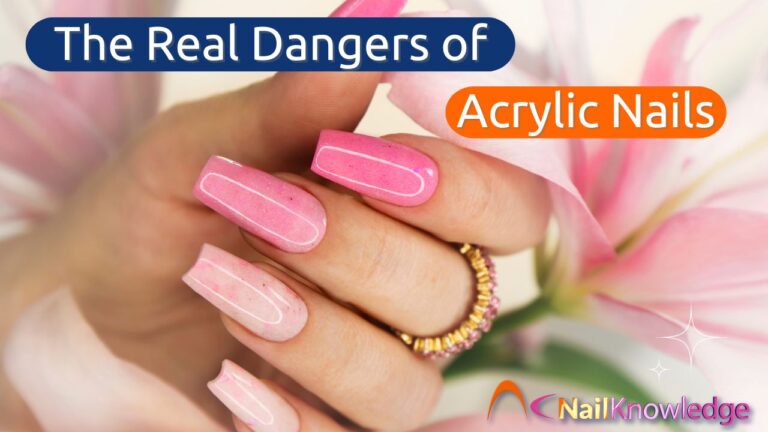O crescimento das unhas como uma janela para o envelhecimento
We don’t often think of our nails as messengers of internal health, but recent research from Harvard geneticist Dr David Sinclair is shining new light on that exact idea. In the study, Sinclair and his team point to a small but steady slowdown in nail growth and ageing after the age of 25. According to the data, nail growth declines by roughly 0.5% each year.
Isso pode não parecer dramático, mas, com o passar do tempo, mostra um quadro mais amplo. O crescimento mais lento das unhas pode refletir processos biológicos mais amplos, como a diminuição da regeneração celular e da eficiência metabólica que ocorrem naturalmente com a idade. Como resultado, suas unhas podem estar discretamente acompanhando o seu "relógio biológico" interno.
Vamos analisar o que isso significa para você e para o setor de unhas em geral.
O que a ciência diz sobre o crescimento e o envelhecimento das unhas
O estudo se concentrou em placa ungueal taxas de crescimento em diferentes faixas etárias. Os pesquisadores observaram que, à medida que as pessoas envelhecem, as placas ungueais crescem mais lentamente, sugerindo que isso poderia ser usado como um indicador não invasivo da idade biológica, semelhante a outros indicadores, como a elasticidade da pele ou a densidade do cabelo.
É interessante notar que o crescimento das unhas não diminui em uma linha reta. Ele segue ritmos biológicos ligados a fatores como temperatura, nutrição, estresse e níveis hormonais. Por exemplo, as unhas tendem a crescer mais rapidamente nos meses mais quentes e mais lentamente quando a circulação é reduzida ou quando há uma doença.
Esse crescente conjunto de evidências coloca o crescimento das unhas na mesma categoria de monitoramento da saúde que os biomarcadores da pele, oferecendo pistas sobre tudo, desde o envelhecimento até doenças crônicas.
Opinião do NailKnowledge: pequenos sinais, grandes implicações
Essa nova pesquisa se alinha perfeitamente com o que já sabemos há muito tempo em termos profissionais cuidados com as unhasAs unhas são mais do que apenas um recurso de beleza. Elas são uma janela para a saúde interna. Embora normalmente usemos as alterações nas unhas para detectar deficiências ou infecções locais, essa ligação mais profunda com a idade biológica abre novas possibilidades para o cuidado preventivo.
Ele também apóia a necessidade de avaliações regulares e informadas das unhas por profissionais qualificados. Técnicos de unhas são geralmente os primeiros a notar mudanças sutis que os clientes podem não perceber, como um crescimento mais lento entre as consultas ou mudanças na espessura ou na qualidade das unhas.
Não se trata de transformar salões de beleza em clínicas de diagnóstico, é claro. Mas sim é sobre o reconhecimento do possível papel do profissionais de unhas como observadores precoces das mudanças relacionadas à idade.
Por que é importante entender o crescimento e o envelhecimento das unhas
A frase "Crescimento e envelhecimento das unhas" pode parecer que pertence a uma revista médica, mas tem implicações muito reais na prática diária.
Veja por que isso é importante:
- Atendimento personalizado: Entender as alterações nas unhas relacionadas à idade de um cliente ajuda a personalizar os serviços, evitar tratamentos excessivamente agressivos e recomendar cuidados domiciliares adequados.
- Confiança do cliente: Orientar os clientes sobre as mudanças naturais no crescimento de suas unhas demonstra profissionalismo e cria uma fidelidade de longo prazo.
- Desenvolvimento profissional: Manter-se informado sobre a ciência emergente na saúde das unhas mantém sua prática relevante e respeitada.
Por exemplo, se um cliente na faixa dos 50 anos notar um crescimento mais lento das unhas após a remoção dos aprimoramentos, essa pesquisa oferece uma explicação científica e uma ótima oportunidade para falar sobre hábitos de bem-estar que apoiam o crescimento saudável das unhas, como nutrição equilibrada e rotinas de aumento da circulação.
Conselhos práticos para profissionais de unhas
Aqui estão algumas maneiras de aplicar esse conhecimento:
- Acompanhe os ciclos de crescimento das unhas. Considere observar as taxas de crescimento das unhas entre os serviços, especialmente em clientes mais velhos, para identificar padrões emergentes.
- Ajuste as expectativas. Clientes mais velhos podem apresentar crescimento e cicatrização mais lentos das unhas, portanto, os prazos de tratamento podem precisar ser estendidos.
- Incentivar o apoio ao estilo de vida. Lembre aos clientes que a hidratação, a dieta e a redução do estresse desempenham um papel importante na saúde e no envelhecimento das unhas.
- Fique curioso. Use esse insight como ponto de partida para uma conversa. Muitos clientes adoram saber como suas unhas refletem seu bem-estar geral.
📖 Pesquisa original:
David Sinclair, de Harvard: O crescimento das unhas mostra a rapidez com que você está envelhecendo
🔗 Leia o estudo completo
📝 Nota do editor:
Essa pesquisa pode ampliar a forma como entendemos as mudanças nas unhas ao longo do tempo. Embora não sejam diagnósticos, as taxas de crescimento das unhas podem um dia ser usadas como um indicador de saúde mais amplo. O NailKnowledge continuará monitorando os desenvolvimentos em nosso Observação da ciência das unhas: O que está mudando em 2025 iniciativa.
💬 Queremos sua opinião!
Você já notou mudanças no crescimento das unhas de suas clientes ao longo dos anos? Você adapta os tratamentos com base no comportamento das unhas relacionado à idade?
Acha que nossa orientação anterior estava errada? Queremos ouvir sua opinião.
📩 Envie-nos um e-mail para: [email protected]
Considerações finais
A ciência das unhas está sempre evoluindo, e esse novo vínculo entre crescimento e envelhecimento das unhas oferece uma visão empolgante de como detalhes aparentemente simples podem refletir processos internos complexos. Para os profissionais de unhas, ele reforça o valor da observação habilidosa, da educação contínua e de uma visão holística da saúde das unhas.
À medida que surgem novos dados científicos, nossas recomendações também aumentam.
Vamos continuar aprendendo, um prego de cada vez.
Fonte original: www.nmn.com







